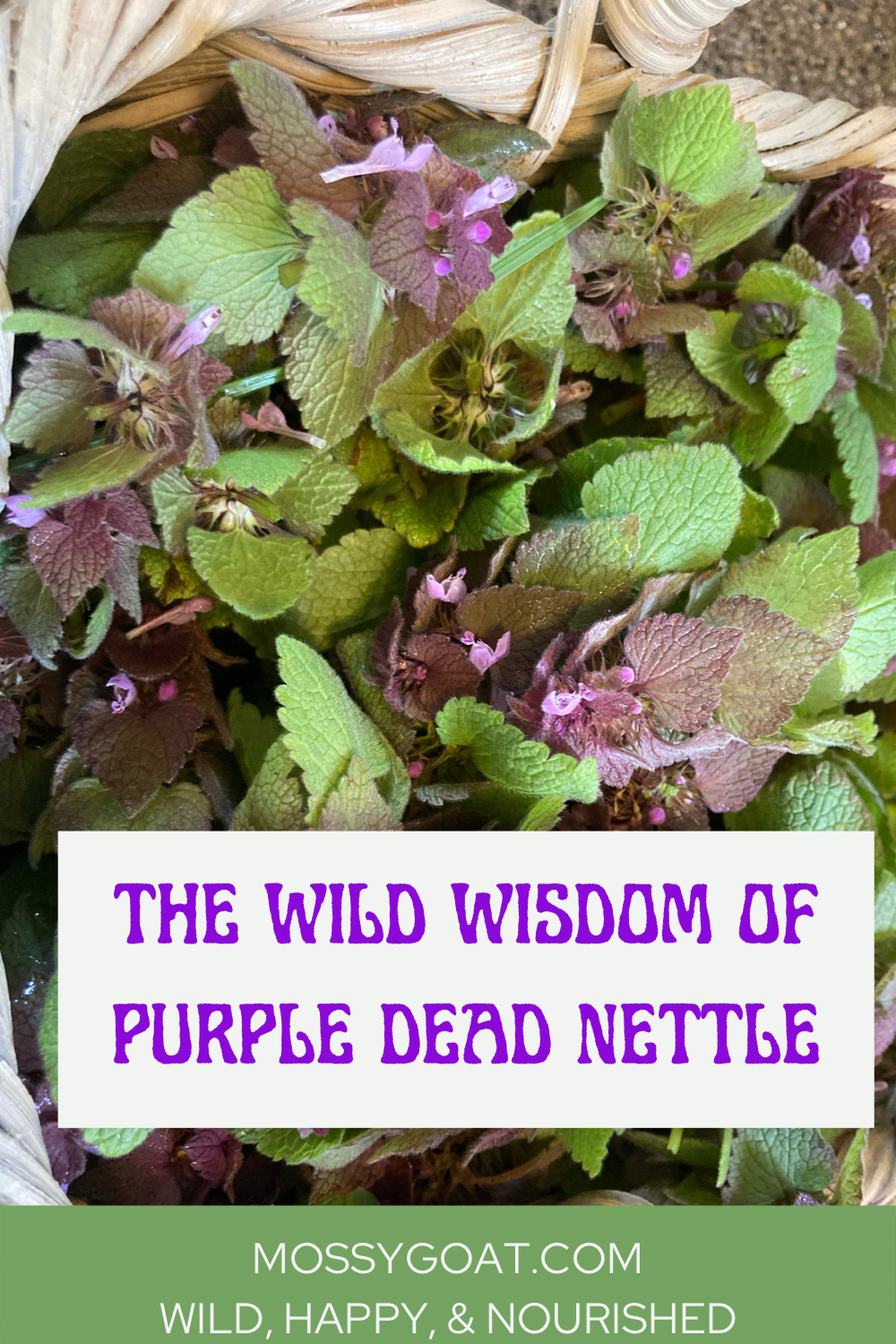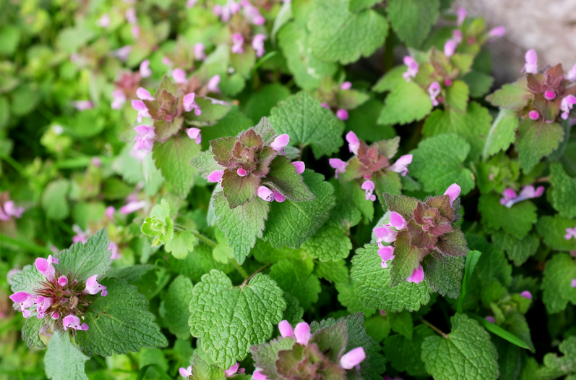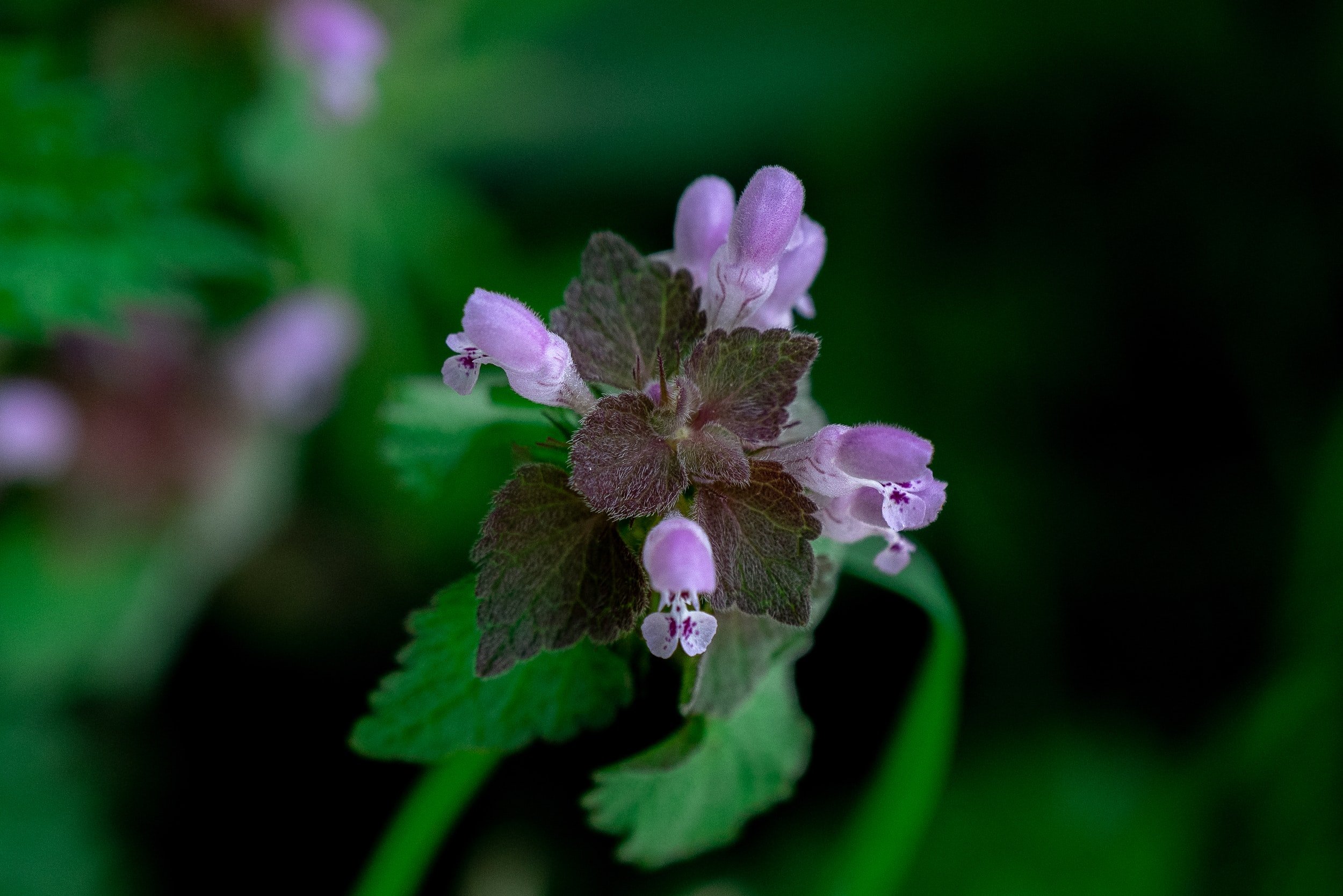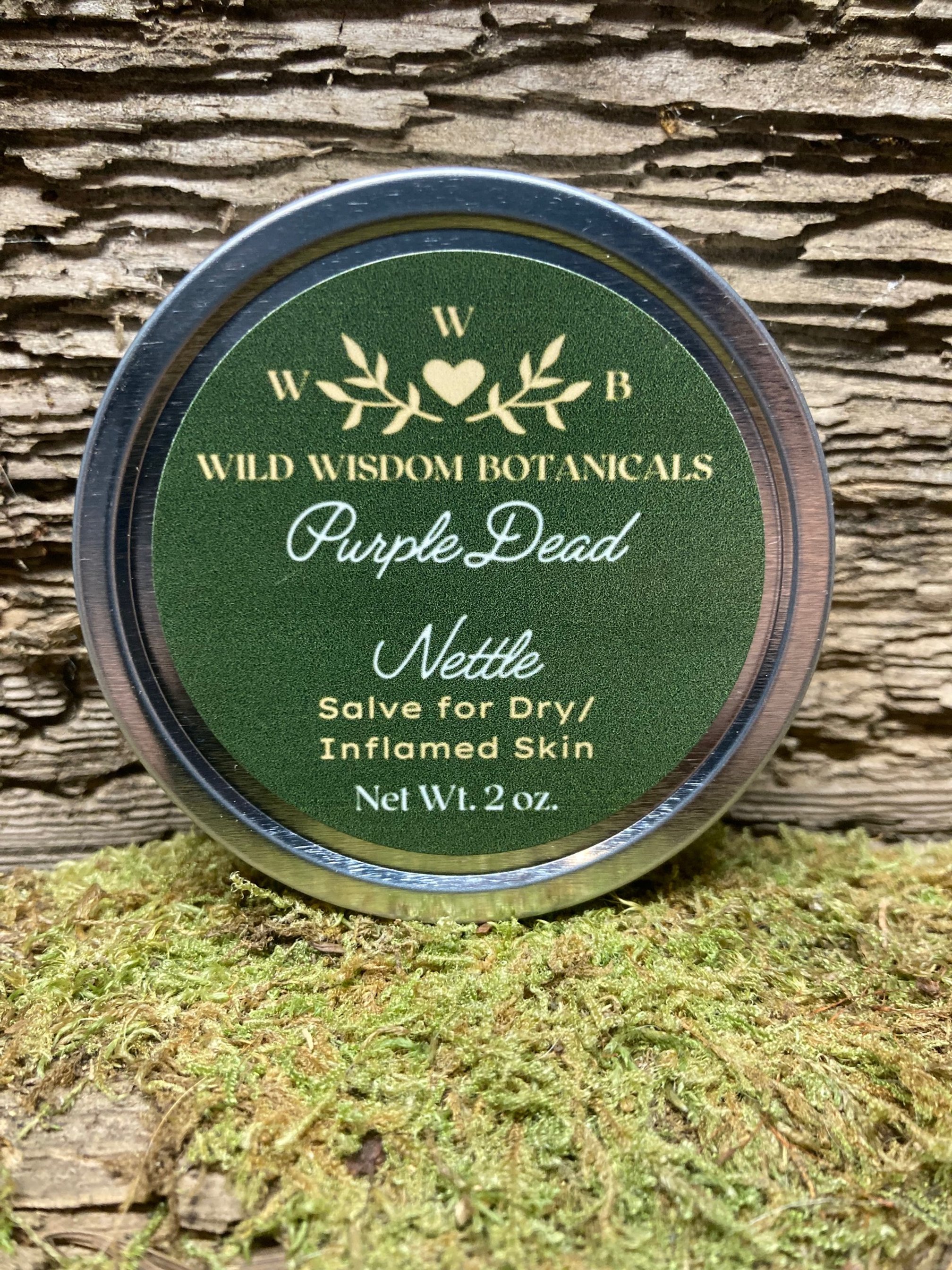Wild Wisdom- Purple Dead Nettle
Purple dead nettle, also called deadnettle or red deadnettle, is a small unassuming flower that many people have seen but it doesn’t often get truly noticed. It’s the type of flower that once it is pointed out to you, you likely will recognize it. It is an early spring flower and dies off once the weather warms up and dries out.
Although it has nettle in its name, it is not related to Stinging Nettle. The “dead nettle’ name is in reference to the fact that the leaves supposedly resemble nettle leaves but have no sting. The two plants are members of different families. Stinging nettle is a member of the nettle family and purple dead nettle is a member of the mint family. Mints are distinguished by having square stems, and purple dead nettle is no exception.
The square stems of the mint family. From left to right: bugleweed, lemon balm, and purple dead nettle.
Purple dead nettle sometimes is mistaken for henbit and self-heal. The good news for beginning foragers is that purple dead nettle has no toxic lookalikes. Both henbit and self-heal are edible and healing.
Purple dead nettle is wholly edible and is very nutritious. It can be used in salads and pesto as well as used for tea. It is very “grassy” smelling and some people can be turned off by its grassy taste. For culinary or tea purposes, it is best used in small quantity and with other herbs as such as basil, dandelion, wild lettuce, peppermint, or chamomile. Purple dead nettle can have a laxative effect on the body if taken in high quantities. Purple dead nettle is high in vitamins A, C, and K and is high in iron.
Purple dead nettle has much to offer. It makes an excellent first-aid salve, allergy tincture, and a helpful flower essence.
Purple Dead Nettle Salve*
A salve is a topical product consisting of herb infused oil, beeswax, and optional essential oils. Purple dead nettle salve is anti-inflammatory and anti-microbial. It is used as a general first-aid salve and for dry and damaged skin.
There is no typical salve dosage. Apply a salve as needed but remember that a little salve goes a long way. Applying the salve one to four times daily to affected areas is appropriate. Salves have a shelf-life of about one year stored in a cool location. They tend to melt into a liquid at high room temperatures which is why storing in a cool location is necessary.
Purple Dead Nettle Flower Essence*
Flower essences capture the healing vibration of a plant. They work on a different level than tinctures or salves. Flower essences work on helping with emotions, traumas, and fears. They do not work on physical problems or disease.
The purple dead nettle flower essence is about grounding and learning to be happy anywhere. It also speaks of getting noticed and not being afraid to being seen. This little flower gets overlooked often although it is a powerhouse of healing. Greatness comes from anywhere. It is grounding and is indicated when you sit on your feelings, or you need help overcoming shame.
Typical purple dead nettle flower essence dosage is four drops four times daily. You can take the drops directly under the tongue or place them in a glass of water that is slowly sipped. Take the flower essence remedy for two weeks, noting any changes in emotions.
Flower essences are preserved in vegetable glycerin, 40% alcohol, or apple cider vinegar. When preserved in alcohol the shelf life in indefinite. To satisfy FDA regulations, the shelf life of flower essences are often listed as being ten years. Vegetable glycerin and apple cider vinegar have a refrigerated shelf life of several months. If you are uncomfortable with taking an alcohol-based flower essence, you can place drops on the top of your head or inside your wrists.
Purple Dead Nettle Tincture*
A tincture is a concentrated herbal extract made by infusing alcohol with herbs. Purple dead nettle tincture is known for helping with seasonal allergies. It is an antihistamine and anti-inflammatory and helps reduce swelling in lungs.
A typical dosage of purple dead nettle to help treat seasonal allergies is 1-2 ml three times a day. Alcohol based herbal tinctures have a shelf life of about three years.
Purple Dead Nettle Around the Web
Interested in learning more about purple dead nettle? Check out these purple dead nettle links from other bloggers.
9+ Things to Make with Purple Dead Nettle by the Nerdy Farm Wife
Purple Dead Nettle: 12 Reasons To Pick This Early Spring Edible by Rural Sprout
Differences Between Henbit and Purple Dead Nettle by Unruly Gardening
Purple Dead Nettle Dye for Wool by Timber Creek Farm
Allergy Sufferers Get Ahead with Purple Dead-nettle by Wisdom of the Plant Devas
Are you interested in learning about the wild wisdom that each plant has to offer? Check out Wild Wisdom Botanicals Wild Wisdom Collections. Each herbal collection features a dried medicinal herb as well as a flower essence, tincture, and herbal salve. All plants used to make Wild Wisdom Botanicals are lovingly grown or sustainably foraged on our wild, happy and nourished homestead.
*These statements have not been evaluated by the Food and Drug Administration. This product is not intended to diagnose, treat, cure, or prevent any disease.
This content is provided by informational and/or educational purposes only. This content is not meant to be a substitute for professional medical or health advice, and you should not accept it as such. If you need medical advice, evaluation, consulting, then you must seek help by a qualified physician or health care provider in your area. Do not ignore or delay your physician’s advice based on something you read on our site. Although every effort is made to ensure that this information is correct, use this information at your own risk.





